“Bond Cliff’ (color woodblock print), on Mt.. Bond in the White Mountains, by Fremont, N.H.-based artist Rick Garber, at New Leaf Gallery, Lyme, N.H.
Above the timber line on Mt. Bond.
Main Street in Fremont, N.H., in 1909.

“Bond Cliff’ (color woodblock print), on Mt.. Bond in the White Mountains, by Fremont, N.H.-based artist Rick Garber, at New Leaf Gallery, Lyme, N.H.
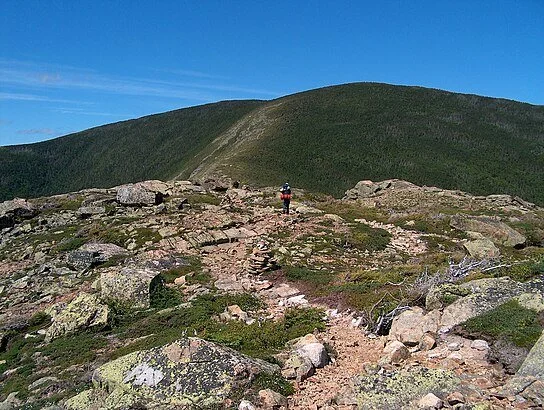
Above the timber line on Mt. Bond.

Main Street in Fremont, N.H., in 1909.

“Craggy Rock Beach” (oil on line), by New Castle, N.H.-based painter Grant Drumheller, this month as the York (Maine) Art Association.

In New Castle, the Wentworth by the Sea resort hotel in 1920. It was built in 1874 and is one of New England’s few remaining Gilded Age establishments of its kind.


“For a hundred and fifty years, in the pasture of dead horses,
roots of pine trees pushed through the pale curves of your ribs,
yellow blossoms flourished above you in autumn, and in winter
frost heaved your bones in the ground – old toilers, soil makers….’’
— From “Names of Horses,’’ by Donald Hall (1928-2018), Wilmot, N.H.-based poet and essayist
To read the whole poem, please hit this link.

1910 image

in Just-
spring when the world is mud-
luscious the little
lame balloonman
whistles far and wee
and eddieandbill come
running from marbles and
piracies and it's
spring
when the world is puddle-wonderful
the queer
old balloonman whistles
far and wee
and bettyandisbel come dancing
from hop-scotch and jump-rope and
it's
spring
and
the
goat-footed
balloonMan whistles
far
and
wee
“In Just Spring,’’ by E.E. Cummings (1894-1962), a poet who grew up in Cambridge, Mass., and as an adult continued to spend a lof of time in New England, particularly at his vacation home in Madison. N.H. At his death, he was considered the second most widely read poet in the United States, after Robert Frost.
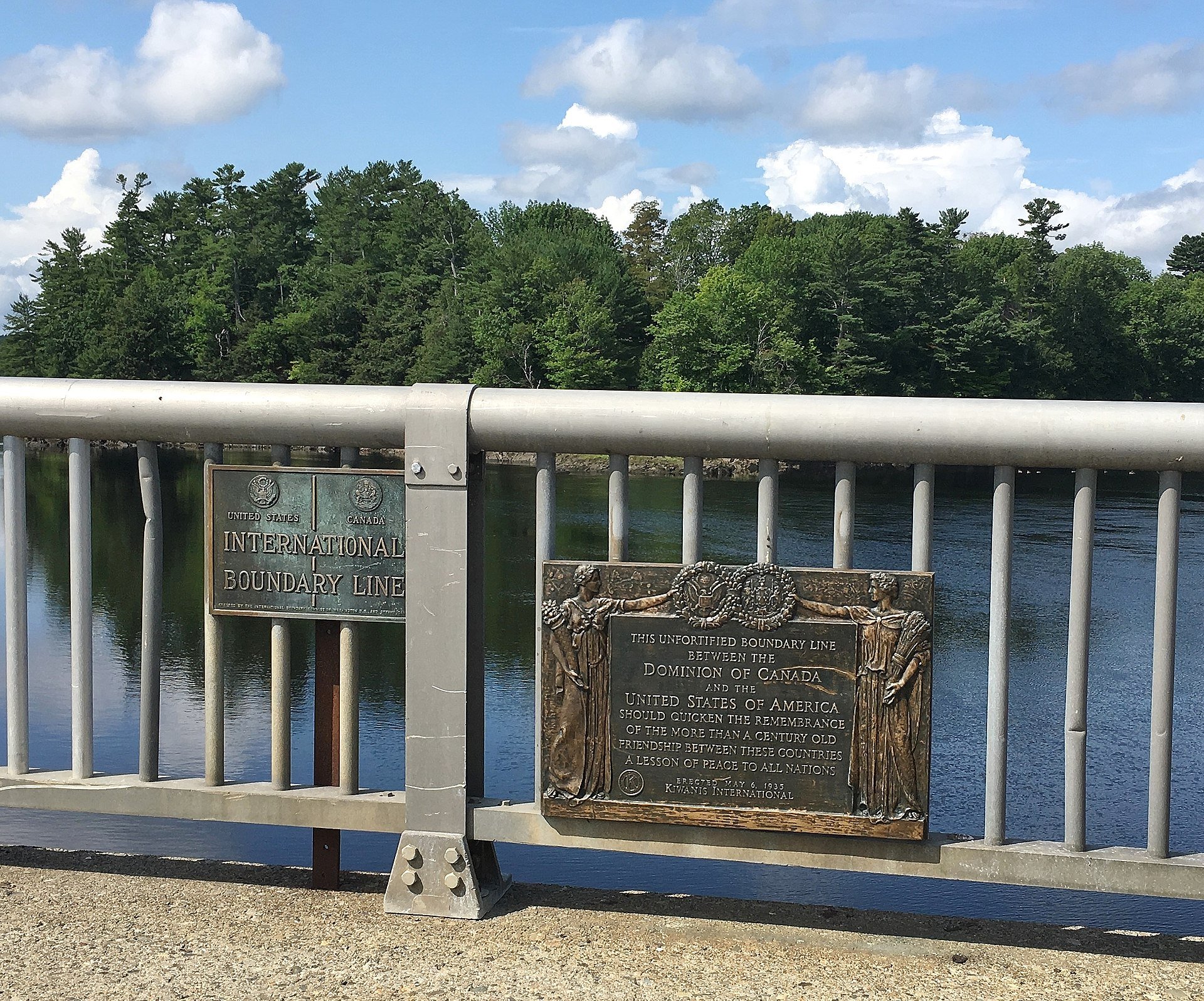
A plaque attached to a bridge on the Maine /New Brunswick border crossing.
— Photo by Marty Aligata

The Haskell Free Library and Opera House straddles the border in Derby Line, Vt., and Stanstead, Quebec. The line on the floor shows the boundary line.

Looking at Campobello Island, in New Brunswick, Canada. Its only land access to the mainland is to Maine.

Park in Pittsburg, N.H., which is on the Canadian border. See New York Times story linked below.
— Photo by Jon Platek
Text from OtherWords.org
In the 1980s, many Texans were alarmed that hordes of immigrants were fleeing Rust Belt states and pouring across the Red River to take our jobs. So my friend and fellow Texan Steve Fromholz recommended a big beautiful wall across our northern border to keep them out.
Fromholz, a popular singer-songwriter and renowned political sprite, was ahead of his time in the political sport of wall building.
Instead of steel barriers and miles of nasty razor wire, Steve proposed preventing Yankee refugees from entering the Lone Star State by planting a 10-foot high, 10-foot thick wall of jalapeño peppers along the length of the Red River. Eat your way through and you’d be accepted as a naturalized Texan.
I thought of Steve’s impishness when I read that Nikki Haley, Ron DeSantis, and other Republicans were concocting a whole new xenophobic bugaboo to goose up their anti-immigrant demagoguery.
We can’t just fear the “invasion” coming across our Southern border, they cry! Indeed, Haley wailed: “It’s the northern border, too.” She added ominously that we must “do whatever it takes to keep people out.” DeSantis piled on, saying we should wall off America’s Canadian border.
Meanwhile, nearly all residents living along that 5,500-mile boundary fear the political wall-mongers more than the imaginary threat of foreigners surging across illegally. “People have always been coming through Canada,” says a clerk at a general store in far-north New Hampshire. Scoffing at the silly political hype, she says: “I don’t think the residents are really worried.”
But Chicken Little politicos won’t be shooed off by reality. After all, they still have the east, west and Gulf coasts to shut off — so expect them to propose razor wire for the entire U.S. shoreline. Their ridiculousness makes Fromholz’s satire seem rational!
OtherWords columnist Jim Hightower is a radio commentator, writer and public speaker.

“Boy From Kezi, Zimbabwe’’ (acrylic and acrylic ink on canvas), by Amy E. Kindler, at River Stones Custom Framing, Rochester, N.H., Feb. 1 to Feb. 28.
The gallery says:
“Amy E. Kindler’s masterful strokes bring to life the narratives of men, women, and children worldwide. Kindler celebrates the rich tapestry of faces, characters, and stories that unite us all with the intention of conveying the profound message of God’s love for the entire human race.’’
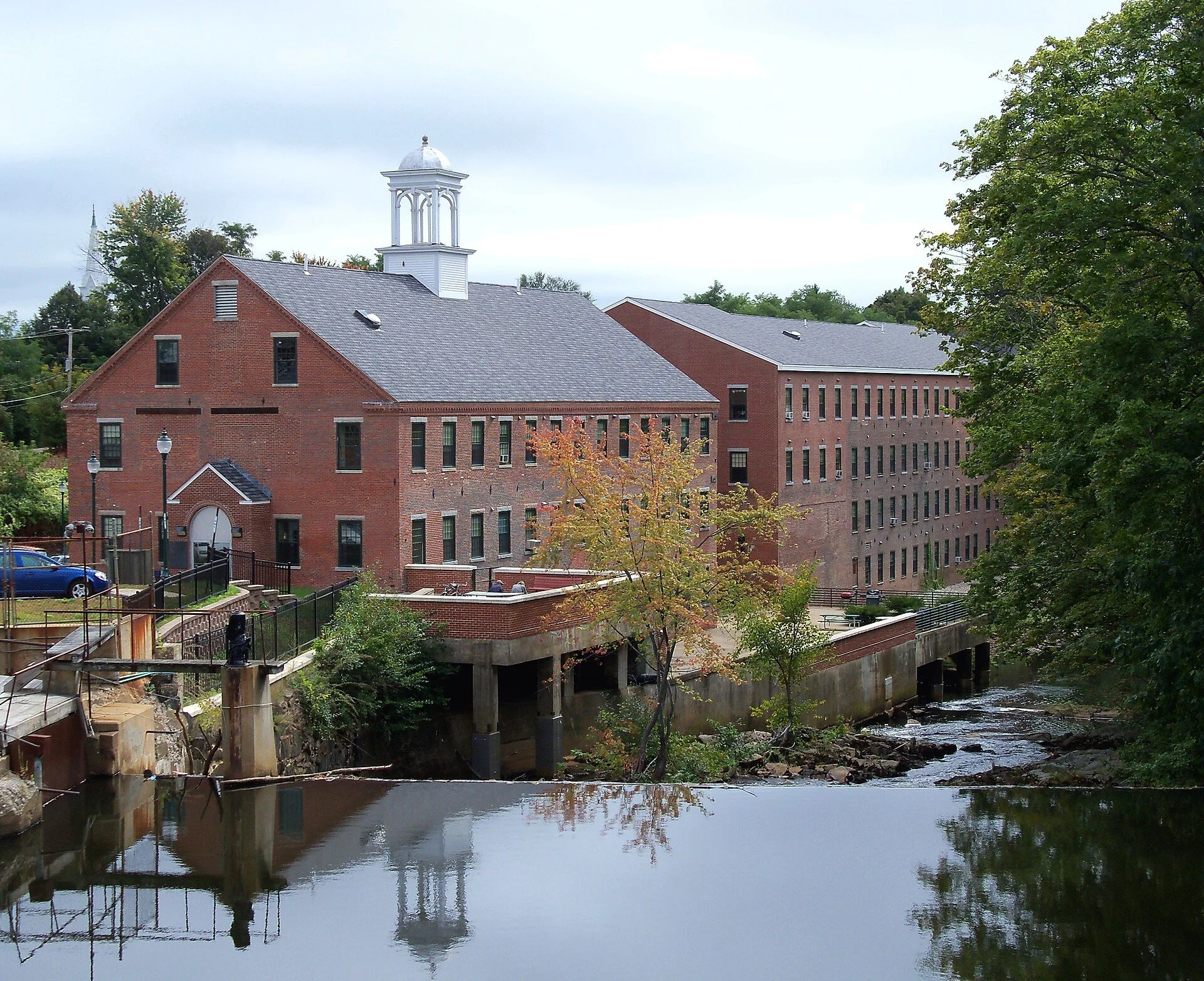
The Cocheco River provided power for Rochester’s early factories in the 19th Century.
— Photo by AlexiusHoratius

“Autumn Leaves’’ (oil on canvas), by Sir John Everett Millais (1829–1896)
Adapted from Robert Whitcomb’s “Digital Diary,’’ in GoLocal24.com
“Indian summer is like a woman. Ripe, hotly passionate, but fickle, she comes and goes as she pleases so that one is never sure whether she will come at all, nor for how long she will stay.”
―The weirdly sexist opening of the novel Peyton Place (1956), by Grace Metalious (1924-1964), who based the once-thought nearly obscene novel on what she saw and heard living in New Hampshire, with Gilmanton considered the model for Peyton Place.
We’re waiting for a freeze in a few days to send most of the leaves from the trees falling in one fell swoop, as often happens a few days before Halloween.
Years ago, this would be followed by air suffused with the sweet smoke from innumerable leaf-pile fires. Despite the bluish air pollution, worsened by the atmospheric inversions common in the fall, we always looked forward to leave-burning season. Leaf-burning is now banned in many communities, mostly for public-health reasons.

— Photo by David Hill
As everything else slows down -- even without a frost the grass grows more slowly -- the squirrels seem to scurry faster amidst the acorn caps. (They’ve stashed away most of the acorns (oak nuts).)
I’m looking forward to that mild, still, dry, hazy and pleasantly melancholy time called Indian Summer that follows the first real freeze. It grants the best walking weather of the year. But get out those light boxes to treat your SAD.

High Street in Gilmanton, N.,H., in 1910.
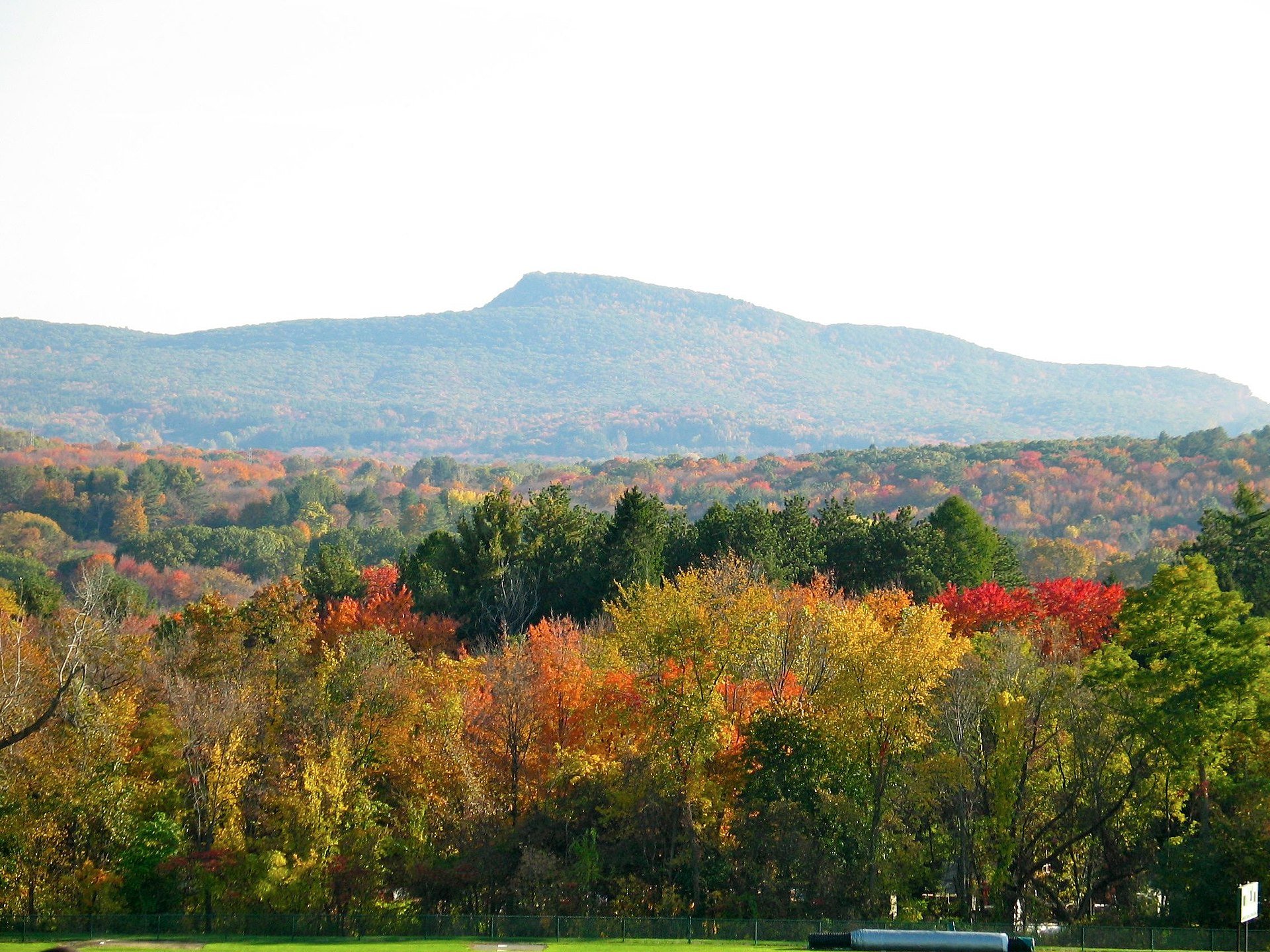
Mount Norwottuck in the Mount Holyoke range, on the border between the towns of Amherst and Granby, Mass.
— Photo by Andy Anderson

“Pond Reflections,’’ by Susan Bailey, in the fall group show at Arts3Gallery, Manchester, N.H. She says: “Yes! I am often asked how I can paint realistic still lifes at the same time as abstracted landscapes”.
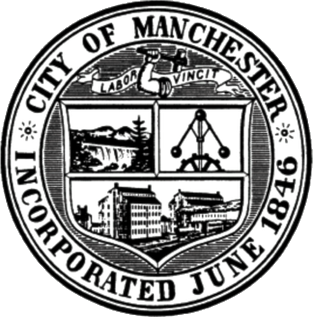
Seal of Manchester, N.H. Note the references to the city’s role as one of America’s first great industrial centers.

From Joan Feirabend’s show “Multitudes,’’ at AVA Gallery and Art Center, Lebanon. N.H., Oct. 6-Nov. 4.
The gallery says:
“For thirty-two years, art has been Joan Feierabend’s daily practice, ‘I have long recognized that my paintings are wiser than I am. When a painting tells me where it wants to go, I do my best to follow.’ Working with multiple layers, she tinted each surface with color and removed paint by pressing a crumpled cloth onto the surface, creating a sort of ‘blot’– an interruption akin to the way unforeseen events can imprint a life. Each painting took many days of layering in this way. Materials used include acrylic paint, ink, pencil, colored pencil, charcoal, pastel, and gold leaf. Her tools were brushes, spatulas, pens, stencils, tape, sponges, wadded cloth, paper, and baby wipes.
“Fond of the verse, ‘I contain multitudes,’ in Walt Whitman’s poem, ‘Leaves of Grass', Feierabend believes this to be true of us all. ‘We all contain contradictions…the complexity that every human being brings to the art– including the artist, speaks to our unique selves.’ She recognizes that viewers may experience multitudes of contradictions while making selections as they will no doubt waver between the diverse choices offered.’’
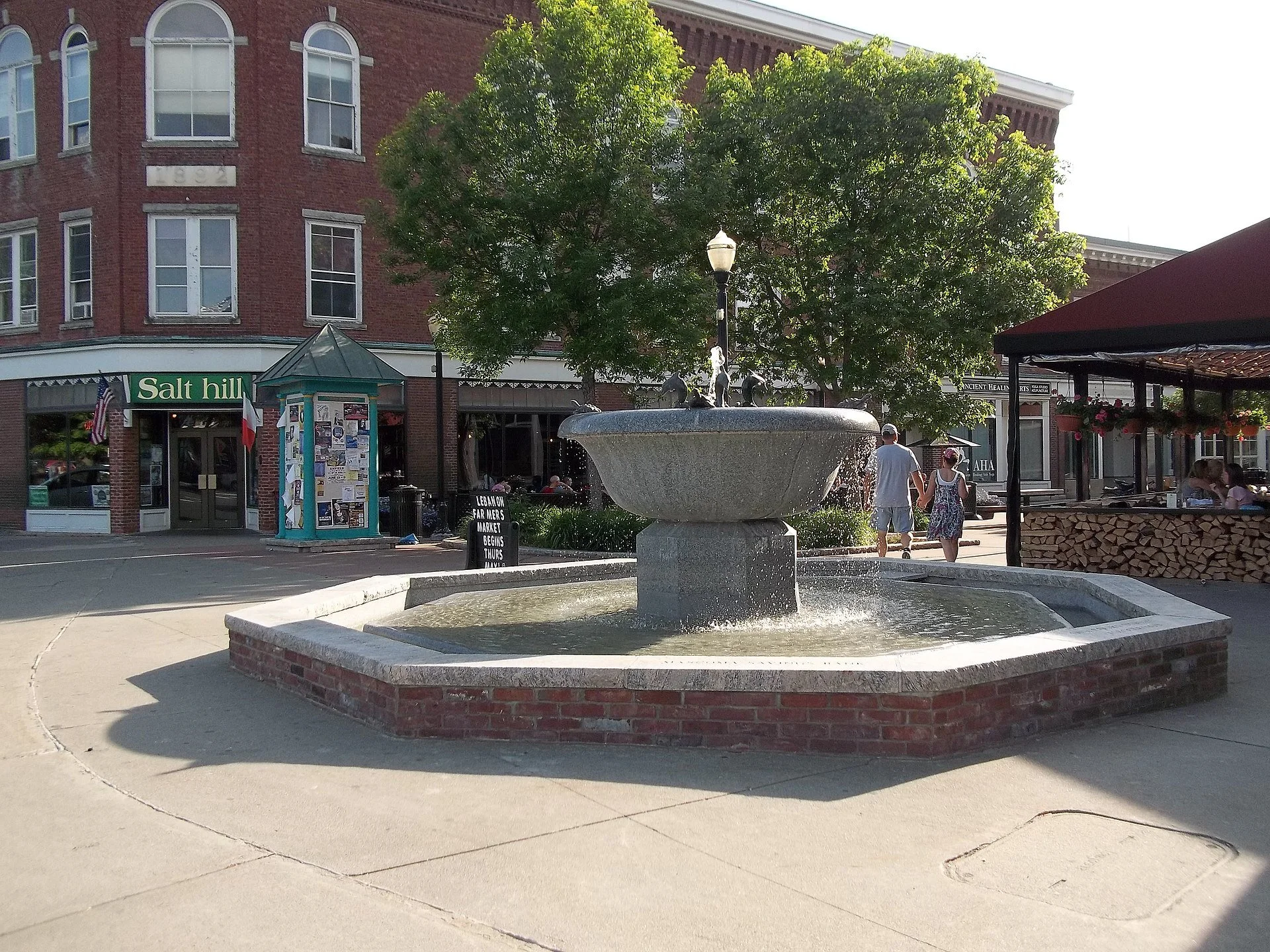
Fountain in downtown Lebanon
— Photo by Artaxerxes

If only….

Hartford in 1914, during “The Insurance Capital of the World’s’’ economic heyday
MANCHESTER, Conn.
Hartford’s long descent from a prosperous hub of industry and finance (especially insurance) to a repository of poverty can be measured in several ways, but an especially telling one was publicized the other day as the City Council decided to hire a consultant to consider having city government operate a supermarket in the city, for profit or even at a loss.
Hartford is said to have become a "food desert," a place whose residents have to travel far to obtain fresh and nutritious food for preparation at home and so have to rely on less healthy items from neighborhood convenience stores. According to The Hartford Courant’s report on the supermarket initiative, in 1968 the city had 13 chain supermarkets but has only one today.
The idea of city government supermarkets is also being pursued in Chicago, where crime is exploding and destroying the city.
Like other businesses, supermarkets won’t operate where they can’t make money safely. They won’t operate where people don’t want or can’t afford fresh and nutritious food and where crime is common.
If, as the City Council’s initiative suggests, Hartford is, like Chicago, now so desperate that government must provide food directly to its residents, the problem goes far beyond a "food desert." The problem is demographic collapse under the pressure of poverty, welfare policy, family dysfunction and poor education -- and government in Connecticut does not seriously examine those things.
Hartford’s government can’t be blamed much here. Cities are the product of their demographics, and their demographics are largely the product of state and federal government policy, which long has been content to concentrate poverty in the cities, to minimize its impact on the middle and upper classes, rather than eliminate it. Indeed, Hartford may be doing all it can just by facilitating construction of middle-class housing downtown, since eventually a middle-class population with enough density might attract not only supermarkets but also other businesses basic to middle-class life.
But this will be a struggle even with a proper housing policy as long as the city’s schools serve mostly disadvantaged students and remain unattractive to people who want to avoid or escape the culture of poverty.
Would Hartford operate a supermarket professionally, or would such a supermarket become another mechanism of political patronage and graft? The less profit such a supermarket would have to make, the less professional it would be.
Middle-class places don’t need government supermarkets. Middle-class places can pretty much take care of themselves. So where is state government’s plan to make Connecticut’s cities middle-class again instead of just sustaining poverty there?
xxx
No one needs to be a feminist to deplore the University of Connecticut’s new association with the late professional basketball star Kobe Bryant. But it would be nice if a few feminists at least took notice\
Sports apparel manufacturer Nike announced the other day that it is renewing its “Kobe” brand of basketball shoes and other items, perhaps eventually including college basketball jerseys, and that six college basketball programs will promote the brand, UConn's among them
A statement from UConn’s athletic department, with which university President Radenka Maric concurred, said: "We are proud partners with Nike, whose support benefits hundreds of student-athletes at UConn every day. Kobe and Gigi Bryant" -- the star’s daughter, who was killed with him in a helicopter crash in 2020 -- "were tremendous fans of UConn basketball, and we're pleased to join Nike in honoring their memory in this way."
The problem is that in 2003 Bryant was charged with raping a young woman employee of a hotel in Colorado after luring her to his room. While he insisted that their encounter was consensual, the details he admitted about it were violent and disturbing. Eventually the woman declined to testify, so the charge against Bryant was dropped, whereupon she sued him. He apologized and settled the case for what was estimated at $2.5 million.
Money apparently excuses everything, even rape and even at UConn, which ordinarily prides itself on political correctness.
Chris Powell has written about Connecticut government and politics for many years. (CPowell@cox.net).

The former Weeks Estate, now a state park, atop Prospect Mountain in northern New Hampshire
Text from Robert Whitcomb’s “Digital Diary,’’ in GoLocalProv.com
There seems to have been something of a fad among rich New Englanders in the first decades of the last century to build mansions, mostly as summer places, on the top of mountains, despite the obvious inconveniences. There’s Beech Hill Farm, in Dublin, N.H. (once used as a fancy drying-out spa); Castle in the Clouds, now a museum, on Lee Mountain, Moultonborough, N.H., and the Weeks Estate, which includes a mansion museum, on the top of Prospect Mountain, in Weeks State Park, in Lancaster, N.H. I visited the park the other week with a friend connected by marriage to the Weeks family.
The house, built by Lancaster native John Wingate Weeks (1860-1926), an investment-business mogul and important Massachusetts and national political and government figure, has a treasure trove of historical information. The main house, finished in stucco, somewhat eccentrically combines the Tudor and Spanish Mediterranean Revival styles. The interior is quirky too, with a huge top room with a pool table in the middle surmounting what had been remarkably small bedrooms below. And of course there are antlers on the wall.
The views from the estate and on the road up are spectacular.
Just nosing around New England can provide lots of pleasant surprises.
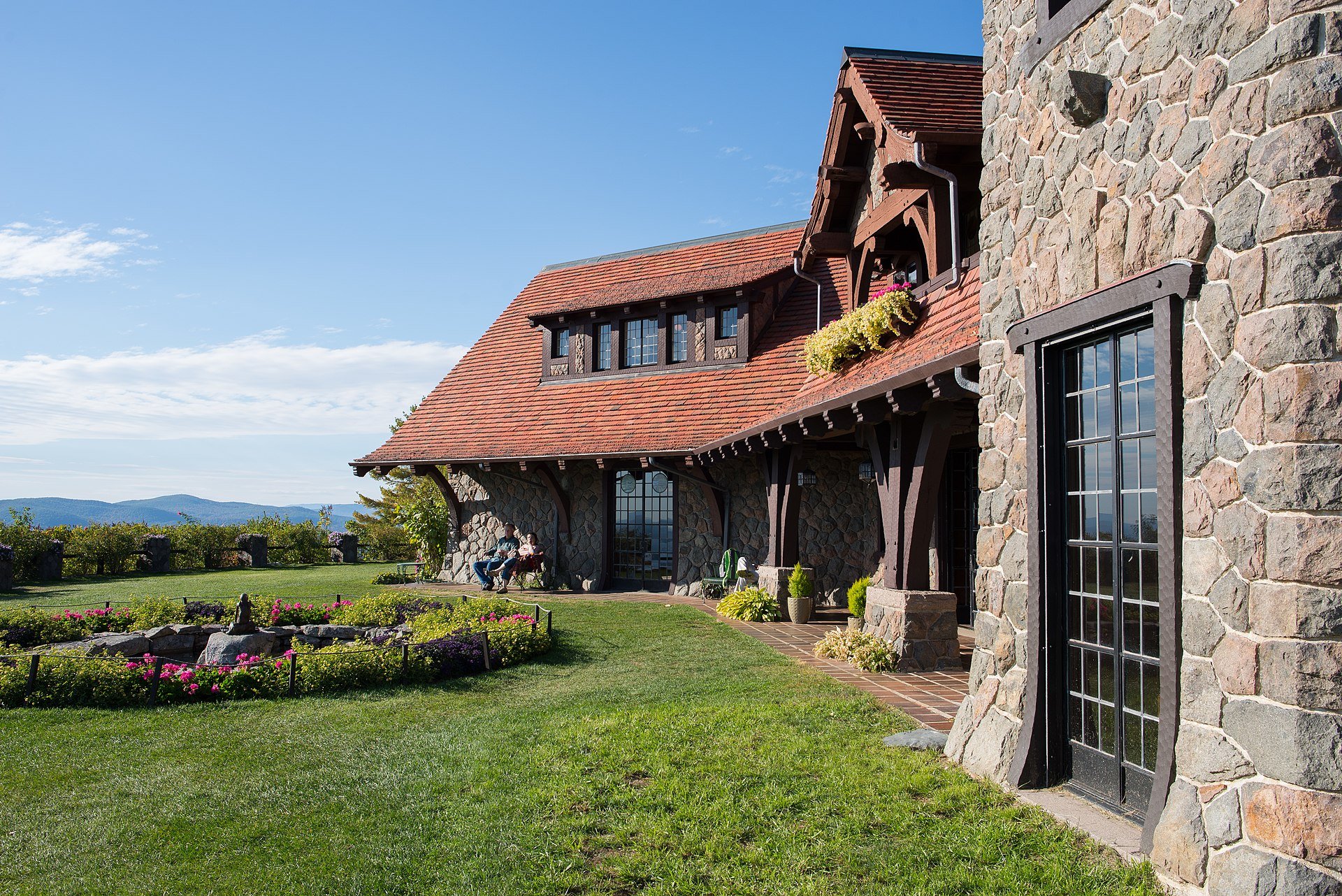
Castle in the Clouds

Work by Alice Garik in her show “Veil, the Well, the Fire,’’ at The Lakes Gallery at Chi-Lin, Laconia, N.H., through Sept. 4
Ms. Garik explains:
“In this work I use the language of forms to connect physically and spiritually with the burden of enforced wearing of a head covering. The forbidding black forms above which the young girl rises, as she looks beyond as if into the future, hold and appear to subdue a woman below them. I also use the language of color—blue, the color of open skies is intertwined in the girl’s hair and the red lines are for the fires {in the Ala Khaki poem that goes with this work}. With these colors I speak of the yearnings for freedom for the women of Iran.’’

“Debate,’’ by Czech sculptor Tomas Kus, at the Andres Institute of Art Sculpture Garden, in Brookline, N.H.

Potanipo Pond, in Brookline, N.H., a small town that’s become part of Greater Boston’s exurbia.
—Photo by John Phelan

At the Judd Gregg Marine Research Complex, 15 miles from UNH’s main campus, in Durham, and at the mouth of Portsmouth Harbor in New Castle, N.H. It supports research, education and outreach in marine biology, oceanography and ocean engineering, with particular emphasis on marine biology and ecology, aquaculture, acoustics and ocean mapping, invasive species, autonomous surface vehicle research, ocean acidification, and renewable energy.

A University of South Florida researcher deploys Tavros02, a solar-powered marine autonomous vehicle.
— Photo by Bgregson
Edited from a New England Council report
“The University of New Hampshire has opened of a new maritime autonomy innovation hub.
“In collaboration with the Paris-based nautical-technology firm, Exail, UNH will use the new center as an operating base for marine autonomous vessels. The hub will produce pioneering un-crewed surface vessels, house a center for international remote autonomous operations, and train future generations on the use of remote autonomous vehicles. As a result, this effort will expand access to public and private customers and offer innovative solutions to help support the blue economy.
“‘This exciting collaboration will not only be good for Exail and UNH students and researchers but also good for New Hampshire and the nation,’ said Larry Mayer, director of UNH’s Center for Coastal and Ocean Mapping. ‘We anticipate that it is just the start of bringing many of our other industrial partners and government colleagues to the state as we create a local engine for the new blue economy.”’
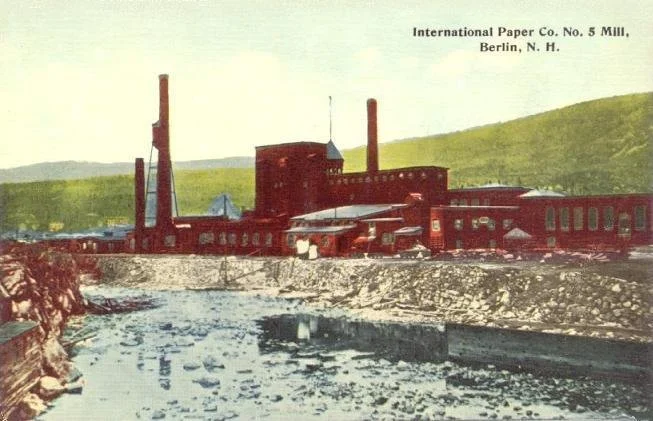
One of Berlin’s paper mills, in 1912. While the industry brought many jobs, it also polluted the Androscoggin River, as well as the air in Berlin.
“Berlin, New Hampshire, in the heart of the Northern Forest, is a small city of approximately 10,000 people, best known for its paper mills and being the largest producer of newsprint in the world during the mid-twentieth century. The city's history is as deep as the woods that surround it. Our dynamic partnership brings together Timberlane Regional High School, in Plaistow, New Hampshire, and the Berlin and Coos County Historical Society in an oral history project, resulting in a ninety-minute documentary on Berlin in the 20th Century. Part of Historic New England's ‘Everyone's History’ series.’’
Hit this link for video
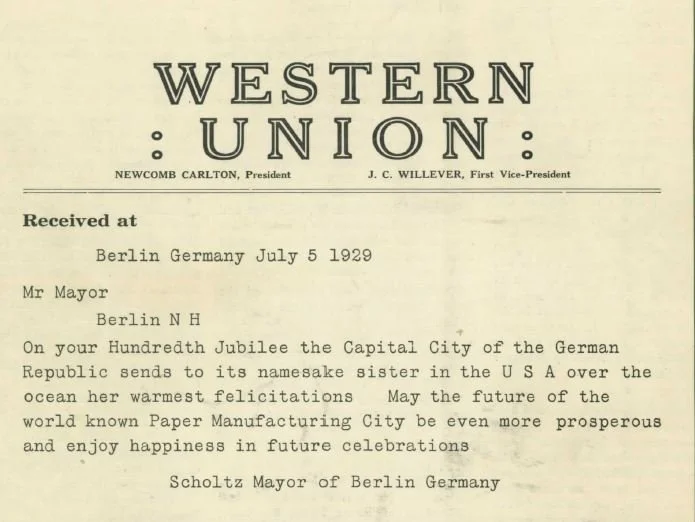
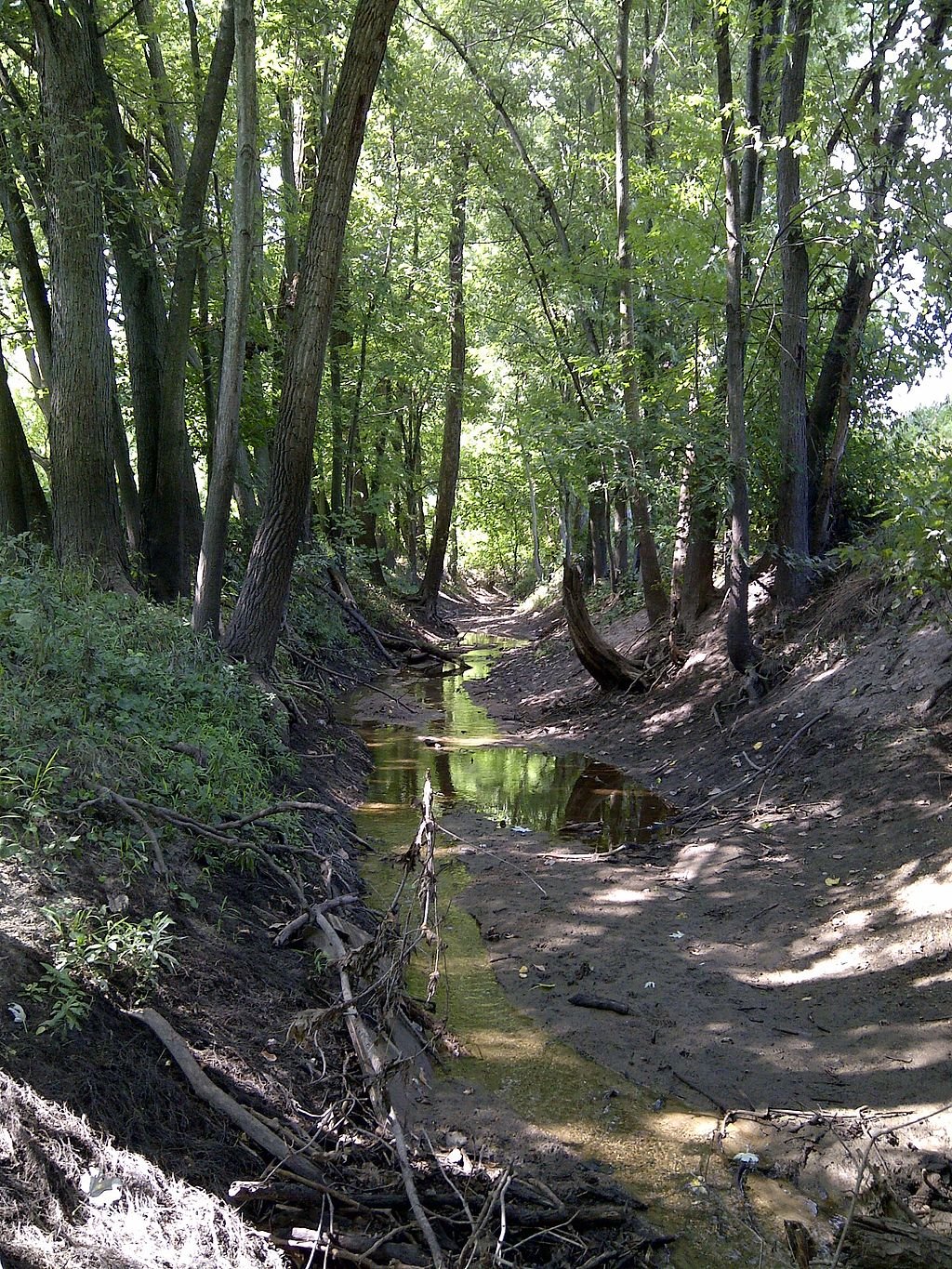
— Photo J. Pinta (Redline2200)
By June our brook’s run out of song and speed.
Sought for much after that, it will be found
Either to have gone groping underground
(And taken with it all the Hyla breed
That shouted in the mist a month ago,
Like ghost of sleigh-bells in a ghost of snow)—
Or flourished and come up in jewel-weed,
Weak foliage that is blown upon and bent
Even against the way its waters went.
Its bed is left a faded paper sheet
Of dead leaves stuck together by the heat—
A brook to none but who remember long.
This as it will be seen is other far
Than with brooks taken otherwhere in song.
We love the things we love for what they are.
— “Hyla Brook,’’ by Robert Frost (1874-1963). Hyla Brook is near the farm in Derry, N.H., where Frost lived with his family in 1900-1911, before he became famous.
J. Pinta (Redline2200) -
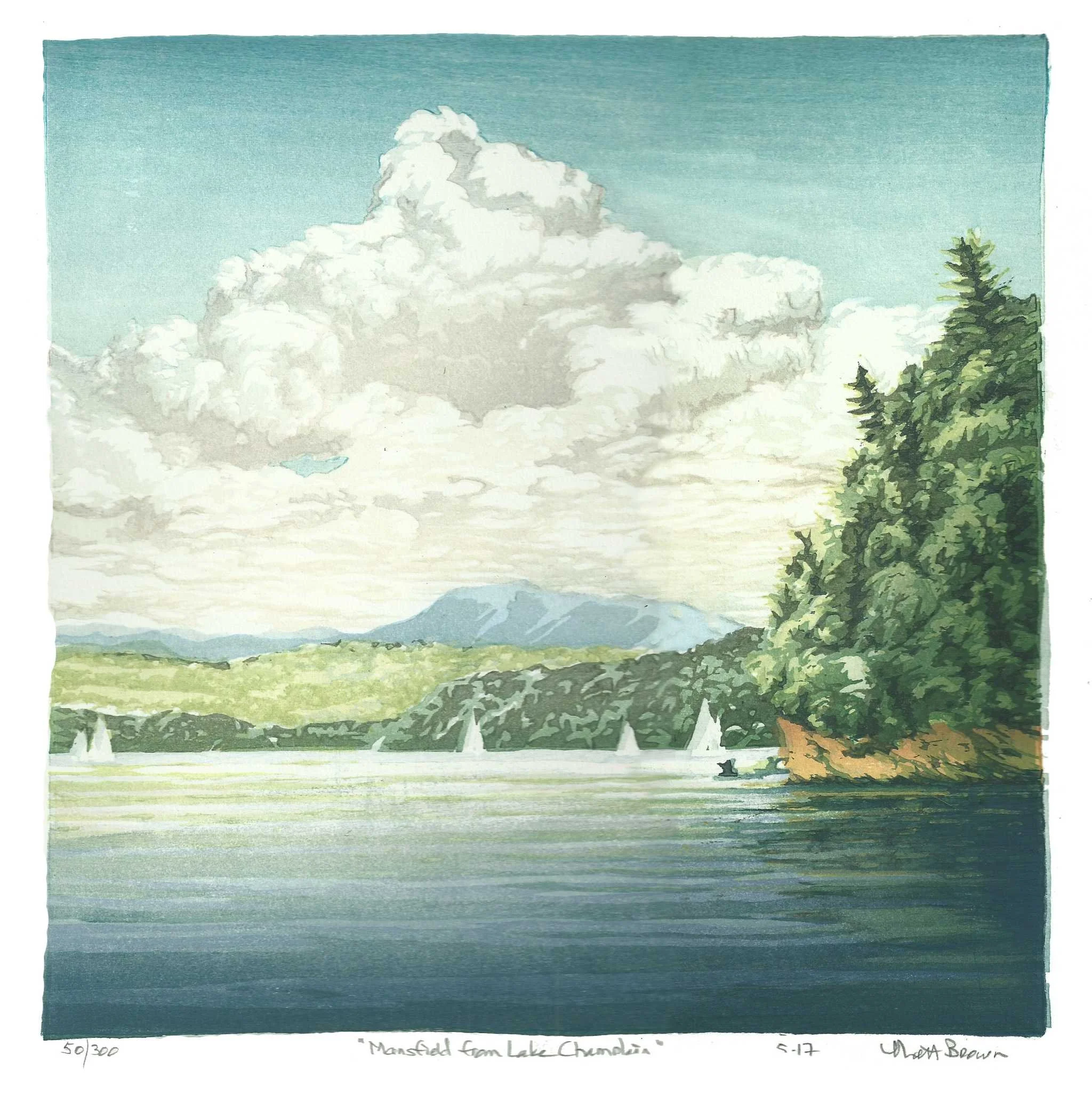
(Mt.) Mansfield from Lake Champlain, by Matt Brown, at Matt Brown Fine Art, Lyme, N.H. Champlain was briefly officially listed as one of the Great Lakes.
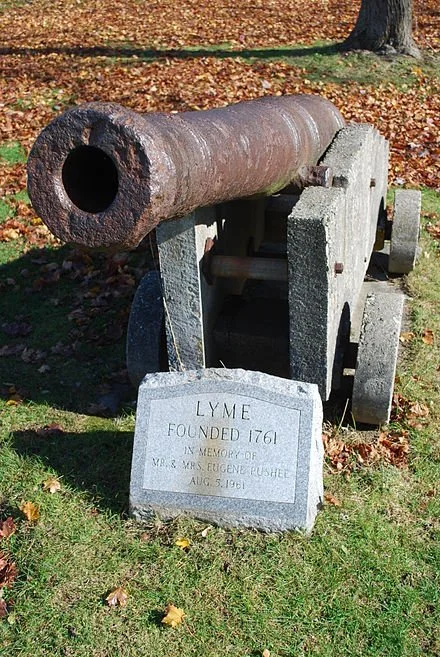
On the Lyme Green

Smarts Mountain looms over Reservoir Pond, in Lyme.
—Photo by Ken Gallager

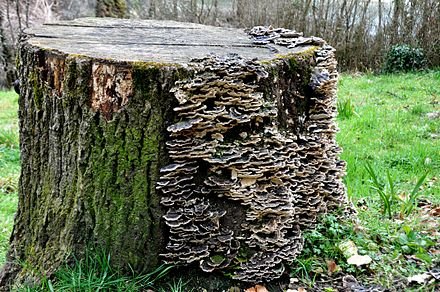
Fungus vs. tree stump
Text from Colleen Cronin for ecoRI News
AUKE UT NAHIGANSECK/CHARLESTOWN, R.I. — While mycologist Lawrence Millman waited for his ride to the 24th Annual Rhode Island BioBlitz from the Providence Train Station, he did something he rarely does: he used his cellphone to call the reporter who was supposed to pick him up.
Millman only bought a cellphone two years ago, but often refuses to use it and rarely gives out his phone number. He usually arranges things via email, including rides, because he doesn’t own a car and let his driver’s license lapse years ago.
For the Rhode Island Natural History Survey’s annual BioBlitz, which he comes down from his home in Cambridge, Mass., to attend annually, he wore an old T-shirt aptly screen printed with mushrooms, hiking boots, and a bit of gray scruff.
He has been coming to the event — a 24-hour scramble to survey the number of species at a particular Rhode Island site — for a decade, he thinks. It’s one of the only mycological events that he still likes attending.
“Male myco-files of a certain age are very eager to compete with each other,” Millman said.
The fungi enthusiast doesn’t like crowds and doesn’t much care for the norms and rules of life, much like the numerous but elusive organisms he likes to study.
To read the whole article, please hit this link.

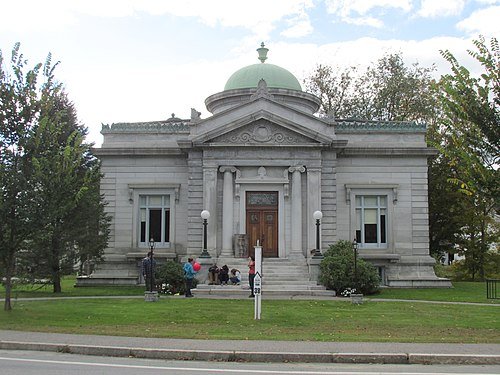
Shedd-Porter Memorial Library, in Alstead, N.H., was designed in the Beaux-Arts style by Boston architects William H. McLean and Albert H. Wright. It was built in 1910 as a gift from John Graves Shedd and Mary Roenna Porter in memory of their parents.
“The New England Thinkers
”Don't rush my sitting under the finch book tree. It has been dark for ten days and like two eyes feed one brain, we go driving. We are on an expedition to see the big numbers and wreckage of the floods.’’
— From the poem “The Continent Behind the College,’’ by Lesle Lewis
Ms. Lewis teaches at Landmark College (the college referred to), in Putney, Vt., and lives across the Connecticut River, in Alstead, N.H.

“A Mata Te Se Come,’’ (sculpture) , by UYRA, a Brazilian artist, at the Currier Museum of Art , Manchester, N.H.
—Photo by Lisa Hermes
—Image courtesy of Currier Museum of Art
The museum says that the show consists of videos and photos of costumes/sculptures made from natural materials that "blur conventional separations between humans, {other} animals, and plants."